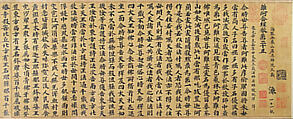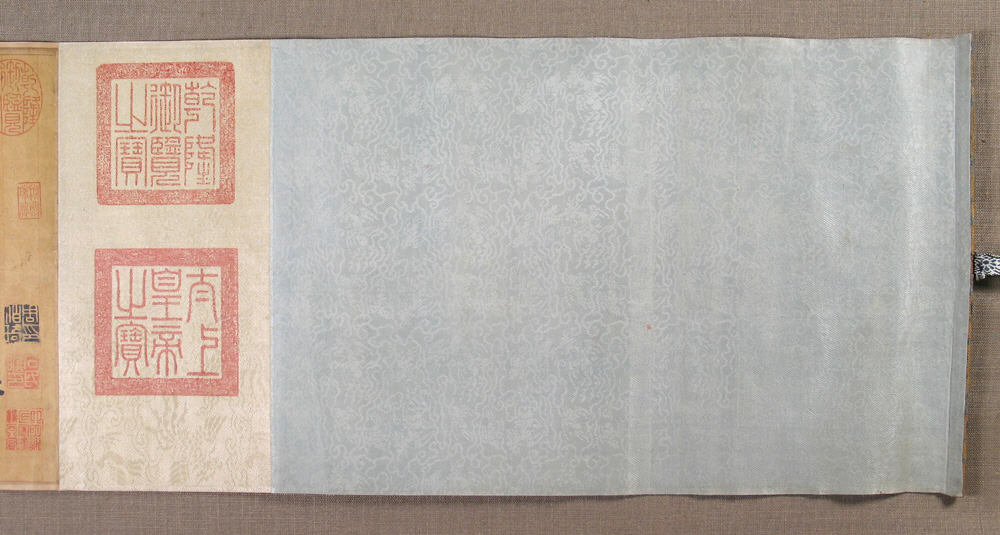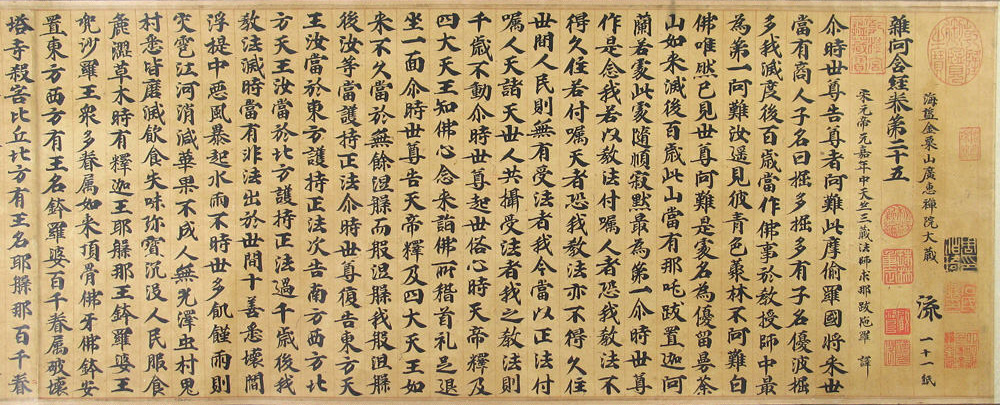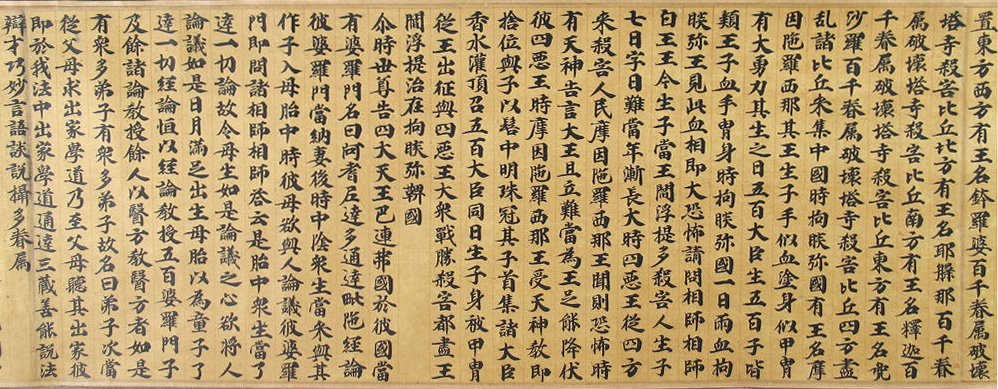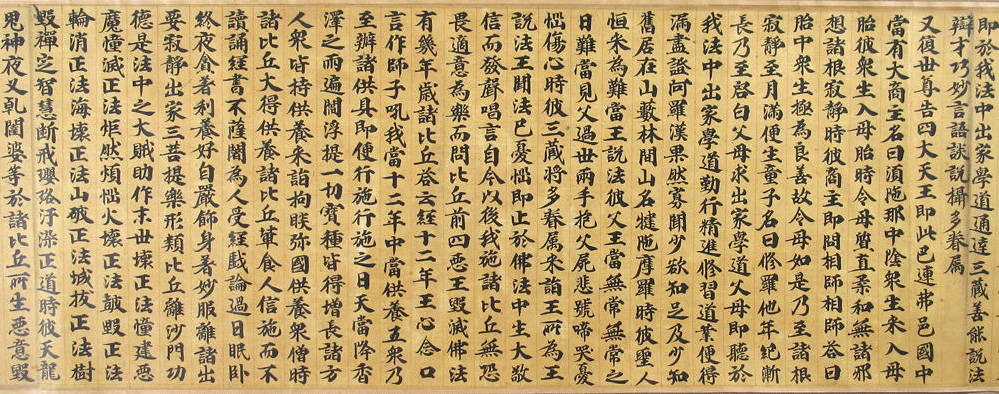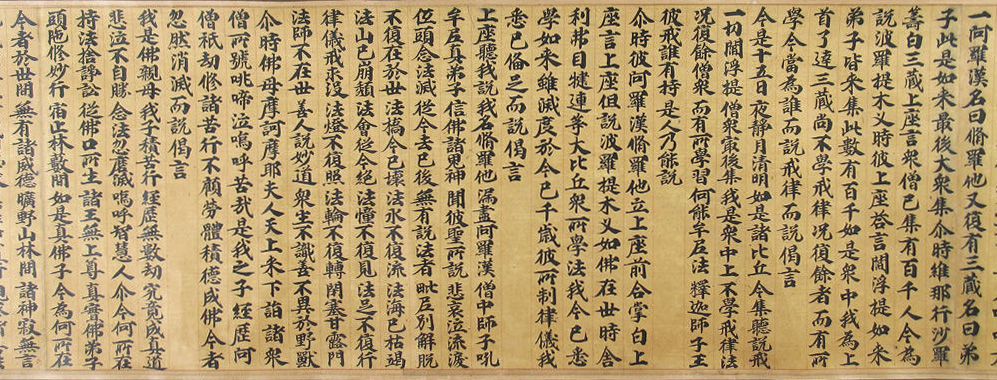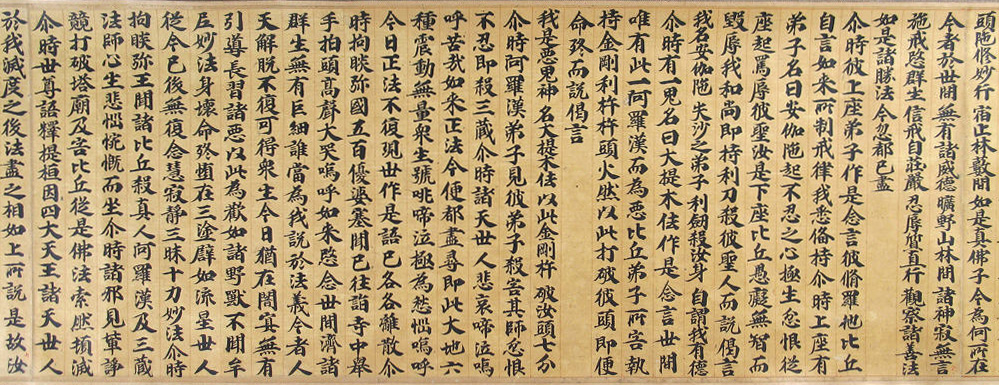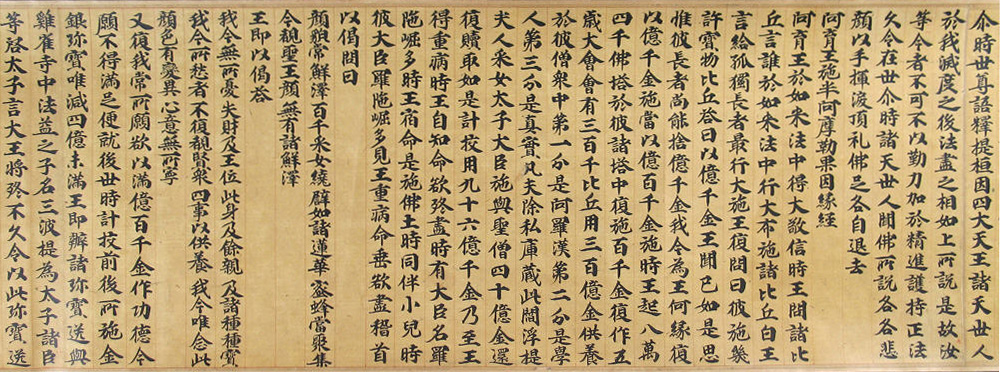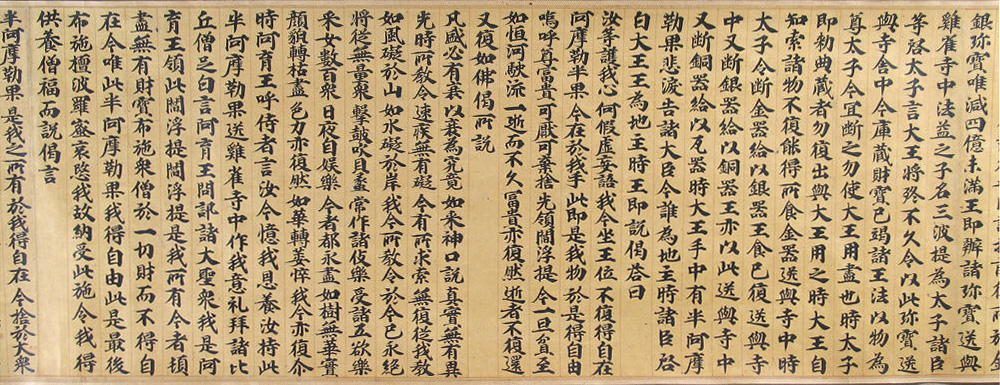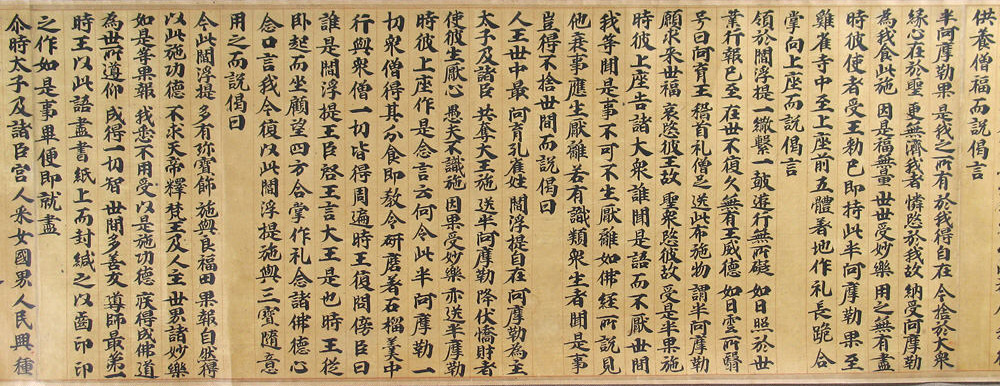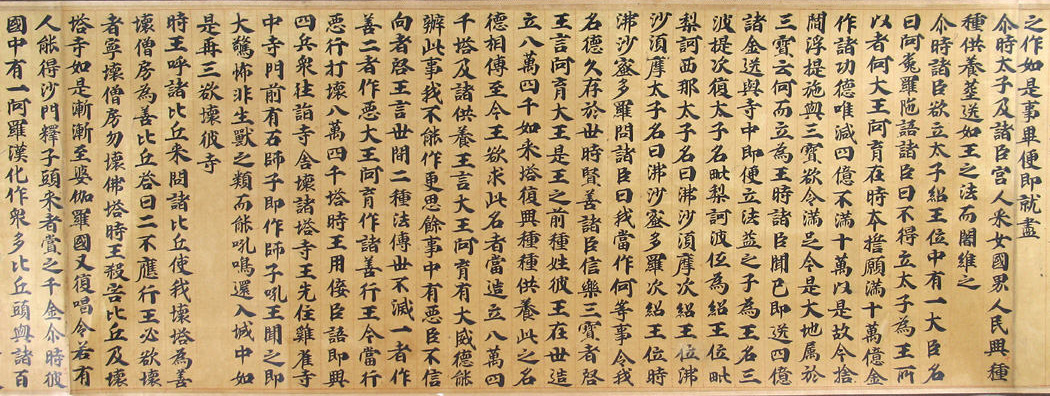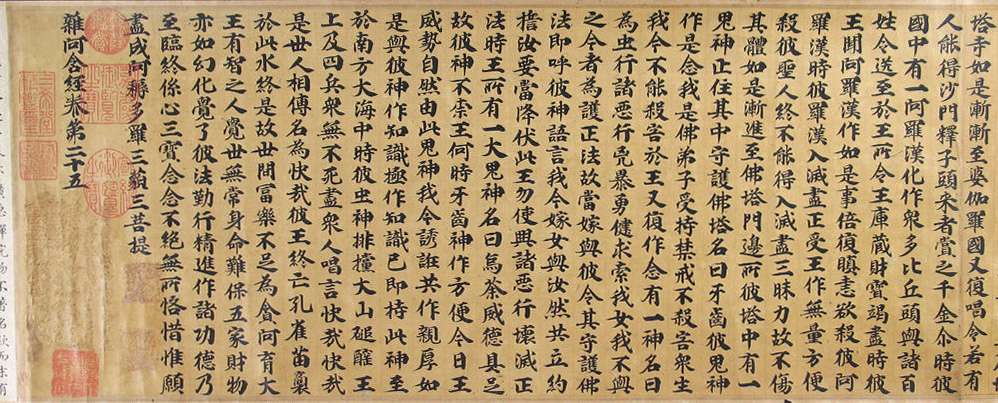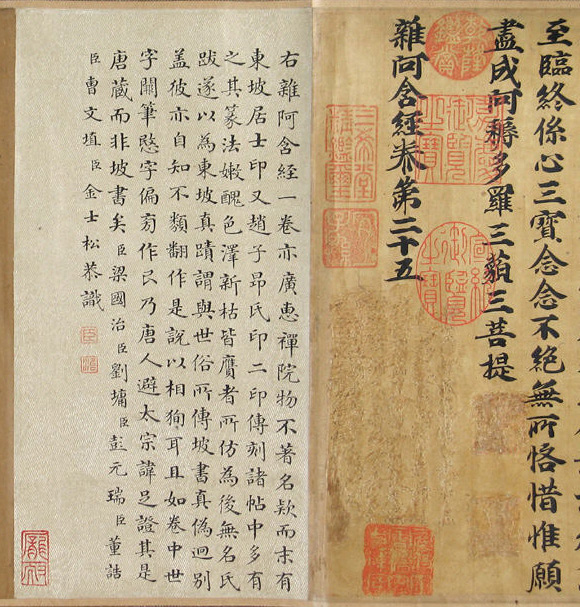Samyutagama Sutra, chapter 25, from the Jinsushan Tripitaka
Not on view
Sutra writing developed its own distinctive tradition of regular script in which individual characters retained the squat, fleshy proportions and compact strokes of early clerical script. In this scroll, comprising 325 columns of standard script, the emphatic thickening of vertical strokes also reflects the scribe’s knowledge of the Tang calligrapher Yan Zhenqing (709–785).
Although the scroll is traditionally dated to the Tang dynasty (618–907), a Song date is confirmed by its provenance. The first line of text identifies the scroll’s place of origin as the Guanghui Monastery, a Chan (Zen) Buddhist temple in Zhejiang Province noted for its fine handwritten sutras and high-quality paper. The temple was renamed Guanghui (“boundless kindness”) in 1008, so the scroll cannot date before that year. Since Yan Zhenqing’s style was especially popular during the early Song, the scroll may be dated stylistically to the eleventh century.
Due to rights restrictions, this image cannot be enlarged, viewed at full screen, or downloaded.
This artwork is meant to be viewed from right to left. Scroll left to view more.
